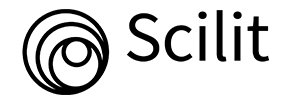
Journal Basic Info
- Impact Factor: 1.989**
- H-Index: 6
- ISSN: 2637-4625
- DOI: 10.25107/2637-4625
Major Scope
- Vascular Surgery
- Obstetrics & Gynecology
- Surgery & Surgical Research
- Endocrine Surgery
- Gastroenterological Surgery
- Laparoscopic Surgery
- Podiatric Surgery
- Minimal Invasive Surgery
Abstract
Citation: World J Surg Surg Res. 2023;6(1):1487.DOI: 10.25107/2637-4625.1487
Risk Factors for Nipple-Areola Complex Involvement in Breast Cancer Patients: A Retrospective Study
Bonomo I, Mallet E, Gosset M, Maud DUQUESNE, Barranger E and Delpech Y
Department of Breast, Gynecologic Oncology and Reconstructive Surgery, Centre Antoine Lacassagne, France
General Director of the Centre Antoine Lacassagne, Nice, France
*Correspondance to: Iris Bonomo
PDF Full Text Research Article | Open Access
Abstract:
Background: Nipple Sparing Mastectomy (NSM) has become a common procedure; but is not always suggested due to the theoretical risk of occult Nipple-Areola Complex (NAC) involvement. NAC involvement risk factors remain controversial. We aimed to confirm whether risk factors described in the literature should be considered as eligibility criteria for NSM.
Methods: This retrospective study analyses patients who underwent total mastectomy with immediate reconstruction for breast cancer at the Centre Antoine Lacassagne between January 2014 and December 2021. The primary endpoint was NAC involvement. The risk factors analyzed were extracted from the literature. The secondary outcome was the safety and feasibility of NSM compared to mastectomy without NAC preservation with immediate reconstruction.
Results: One hundred and fifty patients with NSM were compared to 100 patients without NAC preservation. We found a significantly higher rate of NAC involvement when the radiological Tumor-to-Nipple Distance (TND) was less than 2 cm (p=0.004). There was no significant difference concerning multifocality (p=0.53), tumor size (p=0.15), nipple discharge (p=1), clinical involvement (p=0.91), tumor localization (p=0.53), histological type (p=0.35), HER2/neu status (p=0.69), lymph node positivity (p=0.33) and lymphovascular emboli (p=0.74). We found no significant difference between the groups who underwent NSM and mastectomy without NAC preservation regarding the length of hospital stay (p=0.14), operating time (p=0.18) and postoperative complications (p=0.5).
Conclusion: NSM can safely be considered when radiological tumor-to-nipple distance is ≥ 2 cm if there is no pathological evidence of nipple-areola complex involvement. Further studies must be conducted to determine if a threshold of less than 2 cm can be considered.
Keywords:
Nipple-sparing mastectomy; Nipple-areola complex involvement; Immediate reconstruction; Breast cancer
Cite the Article:
Bonomo I, Mallet E, Gosset M, Duquesne M, Barranger E, Delpech Y. Risk Factors for Nipple-Areola Complex Involvement in Breast Cancer Patients: A Retrospective Study. World J Surg Surgical Res. 2023; 6: 1487..













